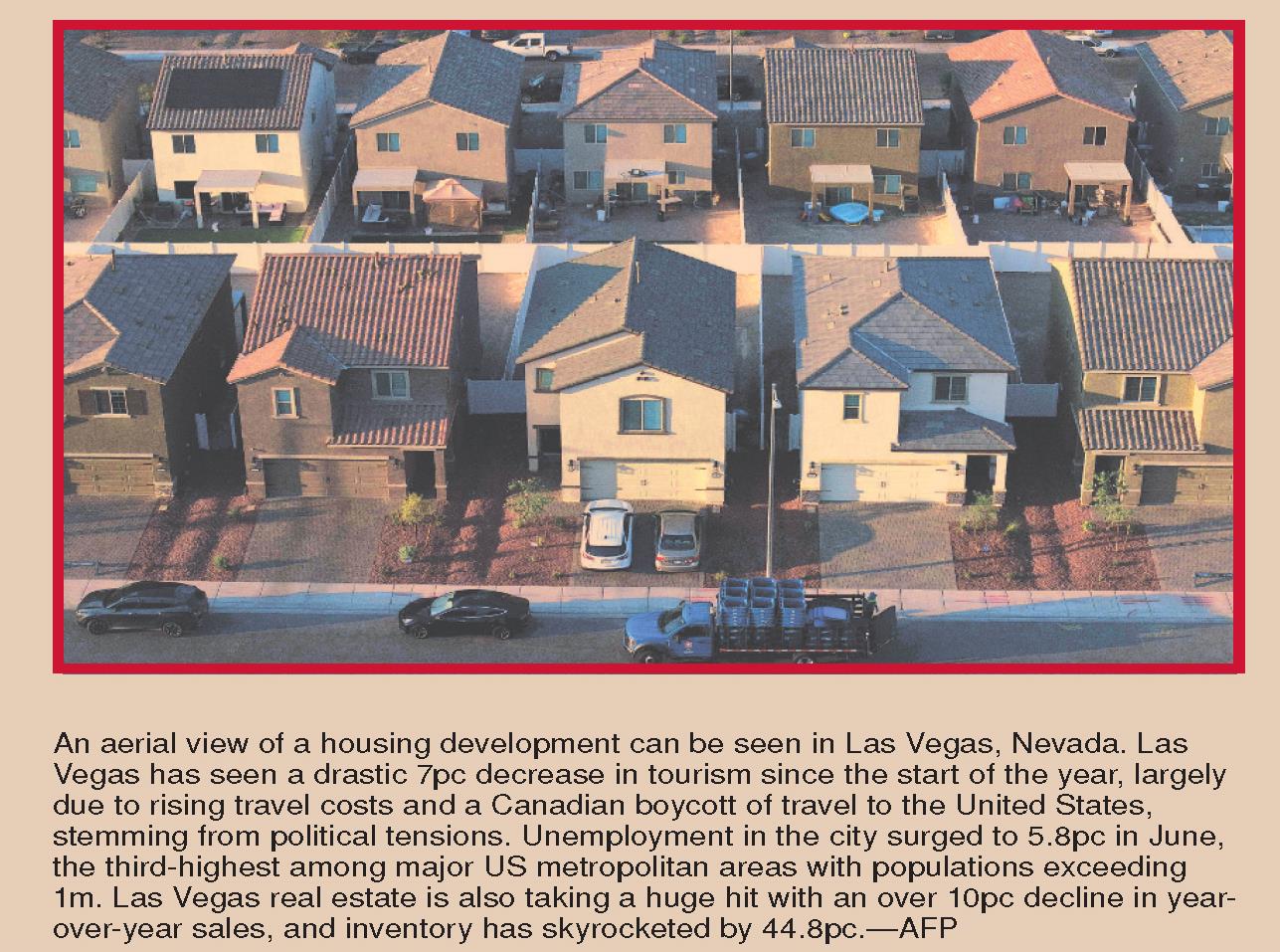Data points
2025-08-11
The power of threatened tariffs Apple CEO Tim Cook presented President Trump with a glass plaque with a gold base, which he said was made entirely in the US. The presentation was part of Apple`s announcement that it will invest $100bn in the US. The promise adds to a $500bn, four-year commitment Apple made in February that repackaged much of its existing spending plans in the US, according to analysts. Mr Cook said all of the glass that Apple uses for iPhones and Apple Watches will soon be made in Kentucky by materials company Corning as part of a $2.5bn investment.
Some of the glass was previously made there. President Trump has said that the US will impose a tariff of about 100pc on imports of semiconductors, but offers a big exemption in that it will not apply to companies that are manufacturing in the US or have committed to do so.
(Adapted from `Trump Exempts Tech Companies That Invest in US From 100% Chip Tariffs,` by Amrith Ramkumar, Natalie Andrews and Rolfe Winkler, published on August 6, 2025, by the Wall Street Journal)Shrinking workforces Big companies are getting smaller and their CEOs want everyone to know it. The careful, coded corporate language executives once used in describing staff cuts is giving way to blunt boasts about ever-shrinking workforces. Gone are the days when trimming head count signalled retrenchment or trouble. Bosses are showing off to Wall Street that they are embracing artificial intelligence and are serious about becoming lean. After all, it is no easy feat to cut headcount for 20 consecutive quarters, an accomplishment Wells Fargo`s chief executive officer touted this month. The bank is using attrition `as our friend,` Charlie Scharf said on the bank`s quarterly earnings call as he told investors that its head count had fallen every quarter over the past five years by a total of 23pc over the period. The shift reflects a cooling labor market, in which bosses are gaining an ever-stronger upper hand.
(Adapted from `CEOs Are Shrinking Their Workforces And They Couldn`t Be Prouder,` by Chip Cutter, published on July 27 2025, by the Wall Street Journal)A future classic? At Crumbl`s Utah headquarters, employees are working on a new dessert with a chocolate and pistachio flavour that has set the internet on fire. Enter the Dubai Chocolate Brownie, the cookie maker`s attempt to cash in on a trend that has sent food companies racing to catch up. The new offering, with ingredients that have proven to be expensive and sometimes difficult to source, will hit stores in the coming months, Crumbl said.
The confection known as Dubai chocolate, legendary across the internet and a recent hit with many Americans, typically involves a shell of rich chocolate filled with pistachio cream and a shredded dough known as kataifi. Like many other recent food fads, it took off after an influencer promoted it on TikTok. Unlike others, it has triggered supply-chain squeezes, shaken up German courts and caused a run on UK grocery stores, forcing them to impose purchasing limits.
(Adapted from `Is Dubai Chocolate The Next Pumpkin Spice?` by Owen TuckerSmith, published on July 26, 2025, by the Wall Street Journal) Al personalities Humans aren`t all the same and maybe the Al agents they work with shouldn`t be homogeneous either. In a recent paper, MIT Sloan professor Sinan Aral and MIT Sloan postdoctoral fellow Harang Ju looked at how work processes change when people collaborate with Al agents instead of with other people.
Using a platform they designed called Pairit, the researchers compared how human-human and human-Al pairs worked together on an advertising campaign. The experiment revealed that giving Al agents personalities that match or complement those of humans can greatly enhance collaboration. For instance, pairing conscientious Al with conscientious individuals improved performance and teamwork, while pairing conscientious Al with extroverted individuals improved productivity. The research suggests that customising Al behaviour based on human traits can drive better collaboration outcomes.
(Adapted from `4 New Studies About Agentic Al From The MIT Initiative On The Digital Economy` by Dylan Wash, published on June 17, 2025, by the Wall Street Journal)




